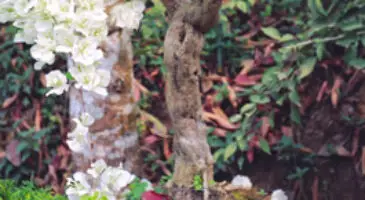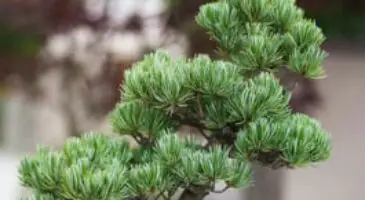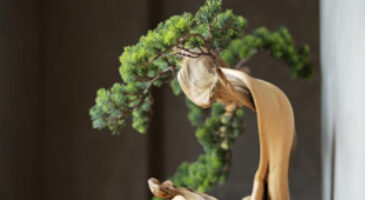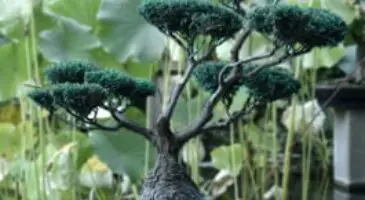Table of Contents
Human beings are ingenious and love to innovate. These innovations may have to go hand in hand with bonsai cultivation techniques. It limits plant growth and gives it a better shape. But here, a question arises, is bonsai cruel? Let’s move to talk about it in detail to get a deep insight into the concept.
Bonsai is a technique in which the plant’s growth is restricted and redirected using methods such as pruning, pinching buds, wiring branches, and limiting fertilizers. The average height of a bonsai tree is four feet.
Like everything else, bonsai needs to start early, and that means getting trees to work. The choice of a tree should be made keeping in view its spot. If you want your bonsai at home, your options will be restricted to tropical or subtropical trees.
On the other hand, if you prefer the outdoor space, your selection should include non-tropical trees, but they are protected from cold and extreme sunlight. The three primary techniques involved in the development of bonsai are care, cultivation, and style.
Is making bonsai cruel
Bonsai care involves manipulating the natural look and form of the tree. Several people have described this approach as cruel because trees are exposed to unnatural techniques to get the desired look. From its figure to its height, there is no specific representation of the bonsai tree. However, whether or not this makes the process cruel is arguable.
On the one hand, a lot of people think it’s cruel as it’s unnatural. Just as every living organism, trees have their own life. They have an inherited natural makeup that permits them to maintain a certain height, shape and produce certain fruits. If we talk about the dwarf trees that have not been planted with bonsai practices, we conclude that they are detrimental.
Consequently, bonsai trees are often thought to be stressful. The main proof of this is the steady growth of plants. They are painstaking the product of a hard life. However, compared to living things, plants also include sensory organs and have specific features that encourage them to adjust to harsh conditions.
As such, bonsai is often express as adapting to invasive and cruel conditions. If you paint a picture of a human being or animal cut, trimmed, tied, and wound, you will be in pain just thinking about it, and that is probably the problem.
There is no evidence to prove that plants feel real pain. Nevertheless, they are treated harshly daily, causing harm to other living things. Their flowers and leaves are cut off before they are ripe.
People crop and cook these plants to prepare food. Even plants that are grown for ornamental purposes are not abandoned because they cause more injuries than others. They are constantly cut and trimmed to create beautiful shapes and patterns. Several plants are painted in bright colors to make them more aesthetically pleasing.
In addition to the conditions to which plants are subjected to get the desired look, they are naturally bare to harsh conditions. They endure when there are floods and even droughts.
They are also at greater risk when they are in their actual habitat. They are suffering from diseases and constantly being attacked by insects. Moreover, plants have to deal with animals that lament them and trample without thinking.
A number of plants struggle to mature. Ever since they have been cultivated consciously or unconsciously, they have had to fight for their continued existence. Some escape the onslaught, adapt to their environment and then you can take them to a whole new environment through indoor gardening or repotting.
Again they have to learn to survive in this new environment. We do all this for a day without asking for their opinion. So, it may not be erroneous to say that plants live nasty lives everywhere and every day.
Are bonsai trees ethical
Several plant bonsai owners try to explain that pruning and twisting are cruel to bonsai plants. However, every plant, including flowering plants, fruit trees, and ornamental plants, needs to be cut down for healthy growth.
Trees planted in the last expectation of every employer bring a lot of flowers and fruits, to get the target branches and roots should be trimmed regularly.
At the same time, no plant can survive in the same pot for long if the soil is not changed and the roots are not pruned. All of these trees require nutrients and space; therefore, the roots need to be cut. But this is not a beastly attribute; the tree is cut down for better growth.
The main purpose of planting a bonsai tree is to keep a healthy tree in a container until it is old enough. It is incapable of managing the health of the in-ground wild plants, but when the bonsai grows in pots, it tends to care for it and keep it healthy.
Therefore, the art of bonsai is not cruel to plants, and at the same time, it is ethics.
Are bonsai trees genetically modified
Bonsai is not a type of tree but a technique of growing trees. Numerous bonsai masters use this to grow plants.
It has been going on for over a thousand years. The crucial goal of planting a bonsai is to create a subtle but realistic demonstration of nature in the form of a tree. Besides, bonsai are not genetically dwarf. In reality, any tree species can be employed to grow.
Bonsais are the common tree that is unnaturally suppressed by trimming their branches and roots—the technique of bonsai initiated in China and was adopted by the Japanese in the second century.
Do bonsai trees feel pain
Lots of people believe that plants feel pain when you cut their stems, take out their leaves, flowers, fruits, etc. But keep in mind that the hormone that causes pain likes adrenaline which may lead to fear. It is only finding in animals to run away or run away from other predators to protect themselves.
But when it comes to plants, they are fixed and can’t move. Therefore, they just have to protect themselves from climate change, for which they make their own particular hormones. At the same time, they are also threatened by other predators, but our ecosystem is designed in the same way.
Plants can’t live their lives, so they don’t feel any pain; they are afraid to produce hormones like us. Moreover, they don’t even have the brain to deal with feelings of distress, fear, or anger. They only respond to the environment and climate changes.
Because we are human beings and have highly developed brains, we have the ability to create emotions in plants and other pets. But plants know how to maintain their best perfection even in the worst of circumstances – it is something that encourages us to learn from them.
When they are in the wild, they have the most challenging time together over the years without proper maturation, although they do get an abundance of them in some seasons. Bonsai, on the other hand, provides them with day-to-day care.
So you can freely cut, trim, prune and bend their leaves, branches, and roots in bonsai, and the plants do not feel any discomfort.
Does bonsai hurt the tree
Basically, the answer is no. So when you think of the meanness in caring for bonsai trees, you are probably mistaking it. You see a tree being forced into a tiny pot and not capable of growing, but it is not.
Of all the plants, bonsai probably get more love. There is a lot of effort, care, and serenity that goes into caution for a bonsai. They can be very unpredictable and hard to develop. Bonsai trees need very constant care and specific maintenance.
If the plant is unhealthy or unhappy, it would pass on or demonstrate signs of weakness, like abnormal softness or yellowing. Therefore, when people plant bonsai trees, they give attention to all the trees’ requirements and give them the best life possible.
Is bonsai allowed in Islam
Yes, bonsai is allowed in Islam, as it is performed for the better health of a plant. For instance, when you prune and trim a plant regularly and give it all essential nutrients. It not only keeps them healthy but also increases their life span.
Are bonsai trees illegal
Mostly not, but because of their age and trunk size, they can be susceptible to potentially harmful diseases and pests that could threaten other tree species close to them. Bonsai of this volume and age are generally not allowed indoors as they may be susceptible to potentially dangerous insects (aphids and mites) and diseases.
Conclusion:
So finally, I conclude that bonsai is not cruel to plants. As I discussed, when the bonsai technique is applied to a plant, it is supplied with constant watering, repotted after a specific duration, and pruned regularly.
I hope after reading this guide, you will be able to clear your misconception.



